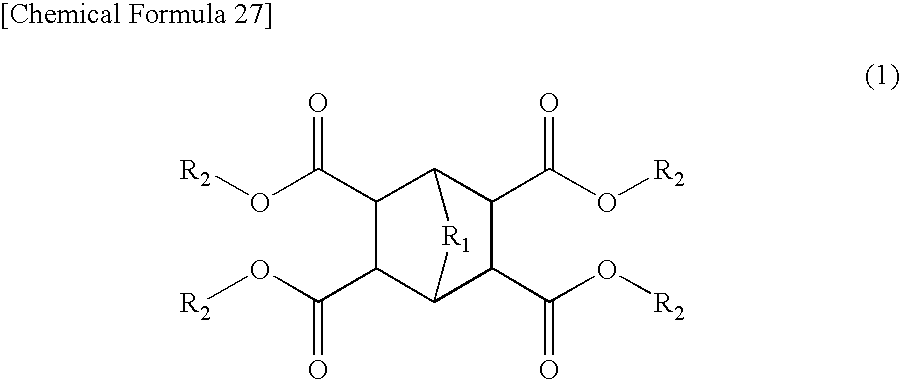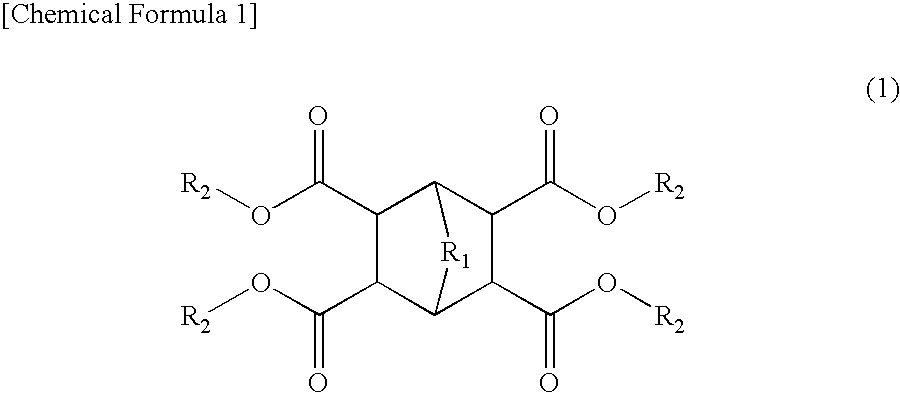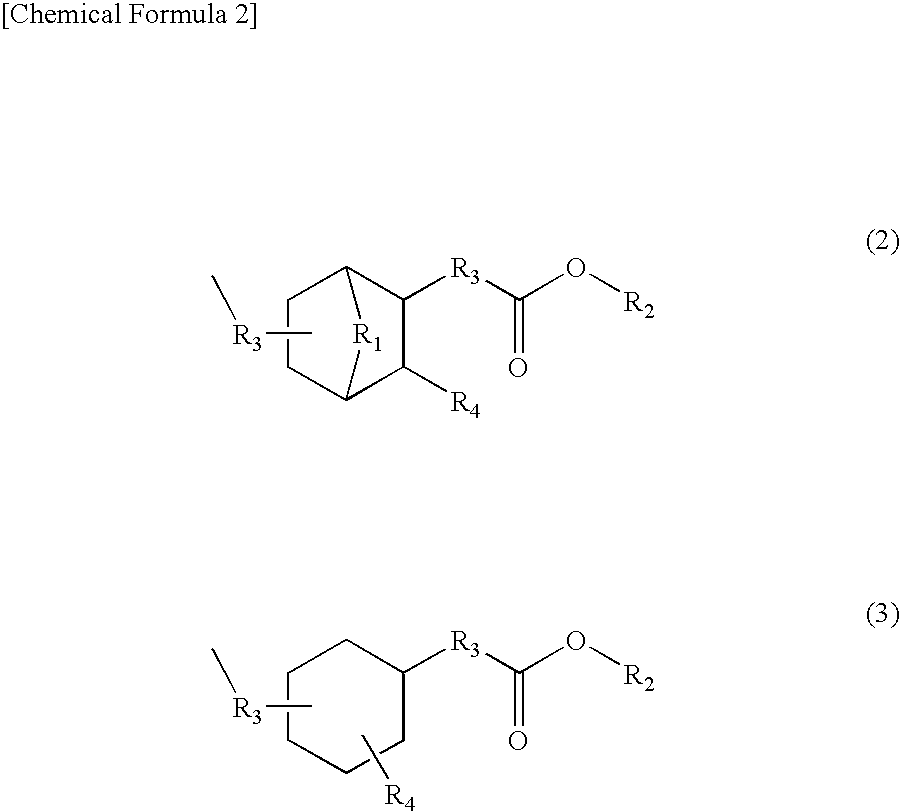Coating Materials Consisting of Low- or Medium-Molecular Organic Compounds
a technology of organic compounds and coating materials, applied in the field of coating materials, can solve the problems of inferior etching resistance, reduced solvent solubility, and reduced other properties necessary for resisting materials, and achieves superior light transmission, high etching resistance, and high solubility in solvents.
- Summary
- Abstract
- Description
- Claims
- Application Information
AI Technical Summary
Benefits of technology
Problems solved by technology
Method used
Image
Examples
synthesis example 1
Synthesis of Compound 24
[0065]
[0066]In a 1 L, four-necked flask, under nitrogen atmosphere, compound 20 (10.00 g) and compound 21 (13.05 g) were mixed in 1,2-dichloroethane (84.6 ml) at room temperature. This mixed solution was immersed in an iced water bath to adjust the inside temperature to 5° C. Then, triethylamine (21.42 g) stored in a dropping funnel was added dropwise under stirring by spending 55 minutes. After the dropping, stirring was conducted for 10 minutes under cooling in an iced water bath, followed by heating up to 60° C. in an oil bath and stirring for 8 hours. After cooling the reaction solution by standing still, saturated sodium hydrogencarbonate aqueous solution was gradually added. Diisopropyl ether (350 ml) was added to this mixed solution, followed by transferring the solution into a separatory funnel to separate the two layers. The obtained organic layer was further washed with saturated sodium hydrogencarbonate aqueous solution two times, with water one ti...
synthesis example 2
Synthesis of Compound 29
[0068]
[0069]In a 1 L, four-necked flask, under nitrogen atmosphere, compound 25 (10.00 g) and compound 26 (20.15 g) were mixed in xylene (73.5 ml) at room temperature. To this mixed solution, p-toluenesulfonic acid (0.316 g) was added under stirring. Then, this mixed solution was heated up to 90° C. in an oil bath, followed by stirring for 6 hours. After cooling the reaction solution by standing still, saturated sodium hydrogencarbonate aqueous solution was gradually added. Diisopropyl ether (200 ml) was added to this mixed solution, followed by transferring the solution into a separatory funnel to separate the two layers. The obtained organic layer was further washed with water one time and with saturated brine one time. Then, the organic layer after washing was dried with anhydrous magnesium sulfate, followed by distilling the solvent off with an evaporator. Furthermore, the solvent was sufficiently removed by using a vacuum pump, thereby obtaining a crude ...
synthesis example 3
Synthesis of Compound 33
[0071]
[0072]In a 1 L, four-necked flask, under nitrogen atmosphere, compound 20 (10.00 g) and compound 30 (18.30 g) were mixed in toluene (64.7 ml) at room temperature. This mixed solution was immersed in an iced water bath to adjust the inside temperature to 5° C. Then, a toluene (20.0 ml) solution of 2,6-dimethylpyridine (9.53 g), stored in a dropping funnel, was added dropwise under stirring by spending 35 minutes. After the dropping, stirring was conducted for 8 minutes under cooling in an iced water bath, followed by heating up to 60° C. in an oil bath and stirring for 6 hours. After cooling the reaction solution by standing still, saturated ammonium chloride aqueous solution was gradually added. Diisopropyl ether (400 ml) was added to this mixed solution, followed by transferring the solution into a separatory funnel to separate the two layers. The obtained organic layer was further washed with saturated ammonium chloride aqueous solution one time, with...
PUM
| Property | Measurement | Unit |
|---|---|---|
| line edge roughness | aaaaa | aaaaa |
| carbon number | aaaaa | aaaaa |
| boiling point | aaaaa | aaaaa |
Abstract
Description
Claims
Application Information
 Login to View More
Login to View More - R&D
- Intellectual Property
- Life Sciences
- Materials
- Tech Scout
- Unparalleled Data Quality
- Higher Quality Content
- 60% Fewer Hallucinations
Browse by: Latest US Patents, China's latest patents, Technical Efficacy Thesaurus, Application Domain, Technology Topic, Popular Technical Reports.
© 2025 PatSnap. All rights reserved.Legal|Privacy policy|Modern Slavery Act Transparency Statement|Sitemap|About US| Contact US: help@patsnap.com



